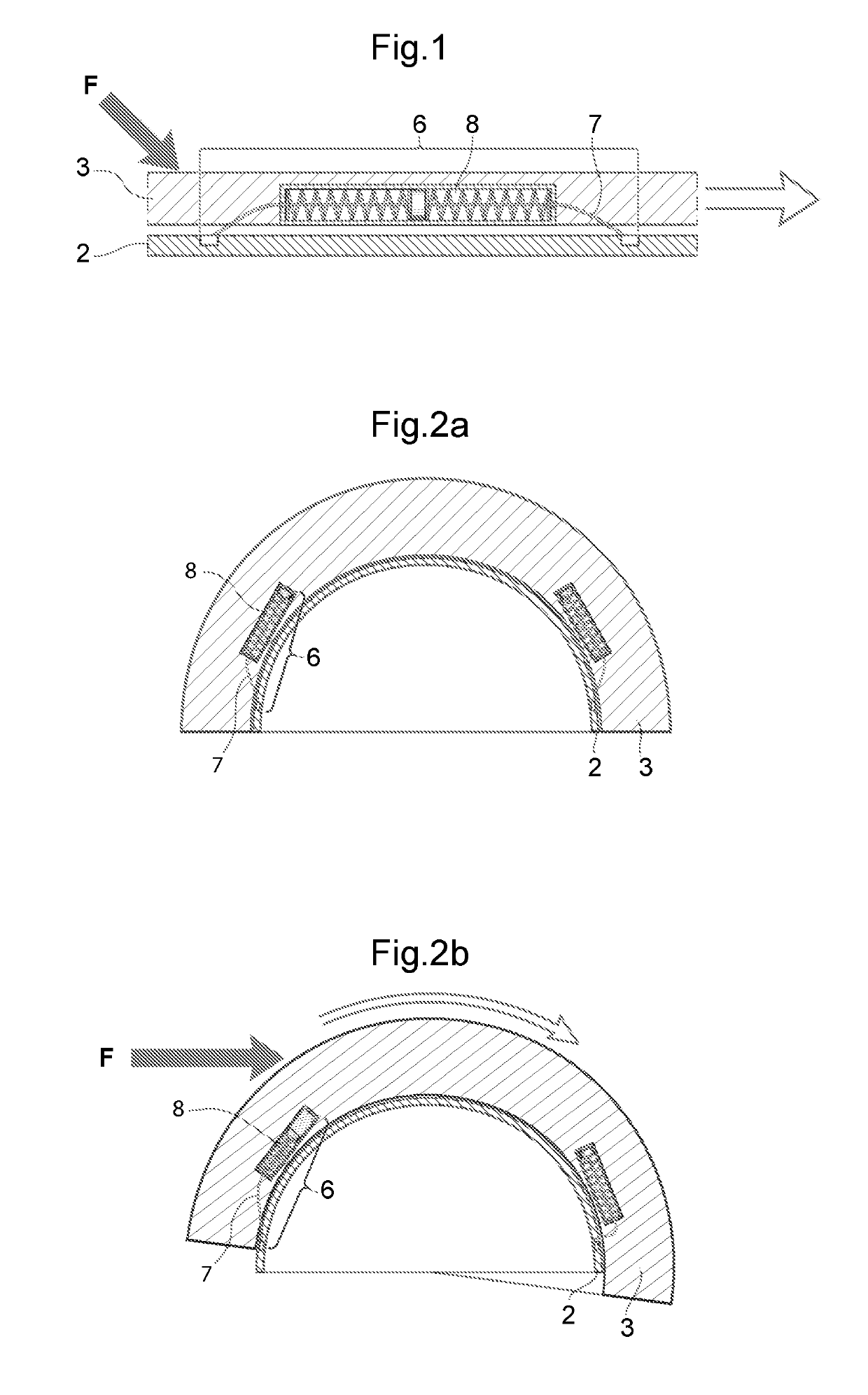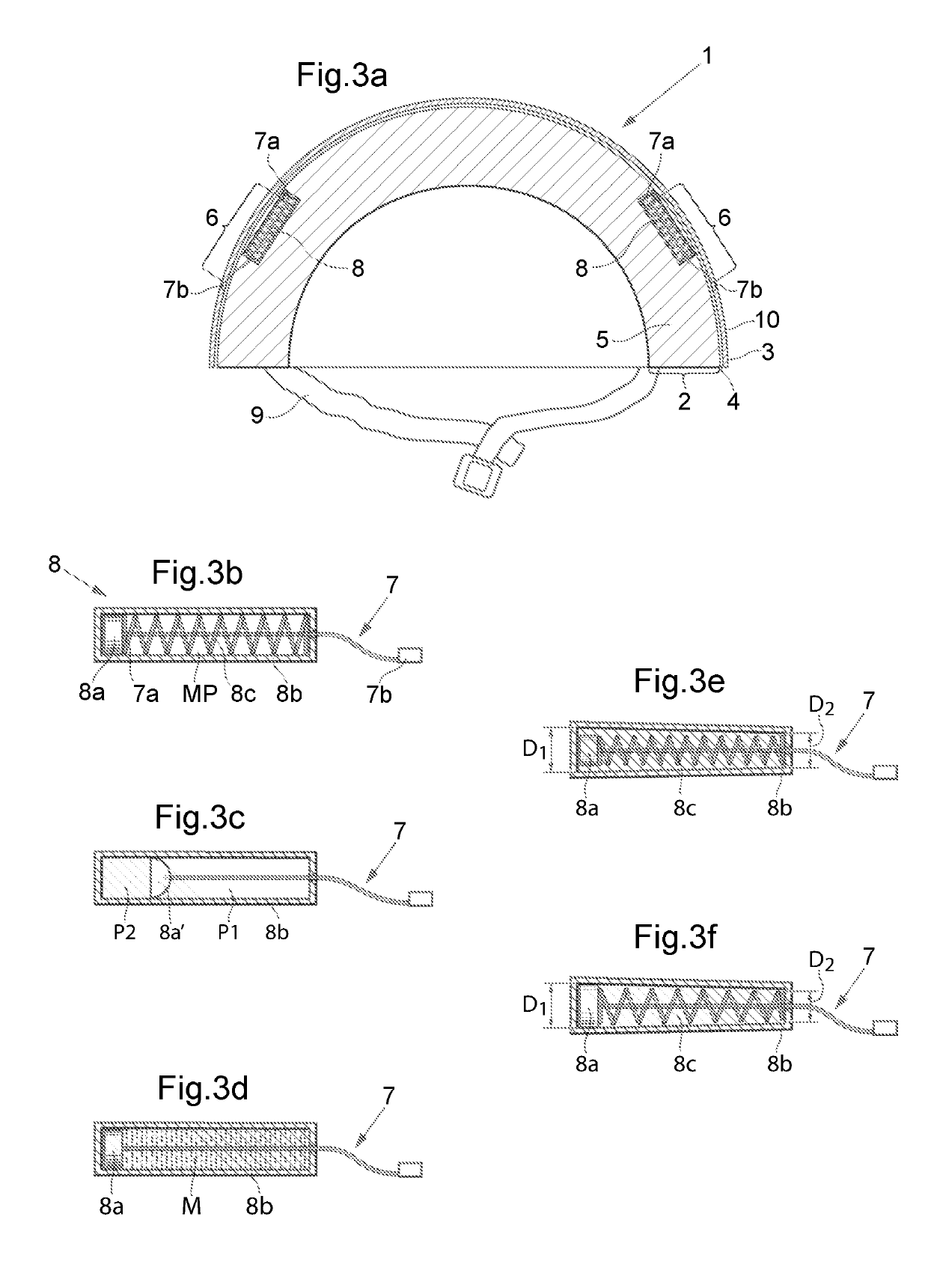Connecting arrangement and helmet comprising such a connecting arrangement
a technology of connecting arrangement and connecting arrangement, which is applied in the direction of helmets, helmet covers, helmets, etc., can solve the problems of rare radial impacts, fractures of skulls, pressure or abrasion injuries of brain tissue, and insufficient energy absorption of other load directions, etc., to achieve the effect of increasing friction
- Summary
- Abstract
- Description
- Claims
- Application Information
AI Technical Summary
Benefits of technology
Problems solved by technology
Method used
Image
Examples
first embodiment
[0077]Now once again turning back to FIG. 3a-3j, where the connection member 7 is shown. Here the connection member 7 is an elongated bendable non-elastic member connected in its first end 7a to the device creating a spring force and / or a damping force 8 and in the other end 7b to the second helmet part 3. The connection member 7 may be a cord, rope, line, wire or similar elongated bendable member. The device creating a spring force and / or a damping force 8 is connected, attached, fixated or molded into the energy absorbing layer of the first helmet part 2. It is of course also possible to connect the connection member 7 to the first helmet part 2 and the device creating a spring force and / or a damping force 8 to the second helmet part 3. The second end 7b may be attached to the helmet part comprising the energy absorbing layer and thus use anchoring means which could be in-moulded, pressed through a hole and expanding on the other side or the like. If the second end 7b is to be att...
second embodiment
[0089]In FIGS. 5a-5c and FIGS. 6a and 6b the connection member 7 is shown. The connection member is an elongated rigid member, having the shape of a pin, connected in a first end 7a to the first helmet part 2. The connection member could be made of a rigid plastic or a metal, for example. In its second end 7b or between its first and second end 7a, 7b the connection member is connected to the device creating a spring force and / or a damping force 8. The device creating a spring force and / or a damping force 8 is connected, attached, fixated, glued, pressed or molded into the second helmet part. The connection member 7 and the device creating a spring force and / or a damping force 8 may also be fixated to the first or second part for example by means of mechanical fixation elements entering or running through the material of the energy absorbing layer. The mechanical fixation elements may be pieces of Velcro, needles, christmas trees, screws, magnets or other elements. When using this e...
PUM
 Login to View More
Login to View More Abstract
Description
Claims
Application Information
 Login to View More
Login to View More - R&D
- Intellectual Property
- Life Sciences
- Materials
- Tech Scout
- Unparalleled Data Quality
- Higher Quality Content
- 60% Fewer Hallucinations
Browse by: Latest US Patents, China's latest patents, Technical Efficacy Thesaurus, Application Domain, Technology Topic, Popular Technical Reports.
© 2025 PatSnap. All rights reserved.Legal|Privacy policy|Modern Slavery Act Transparency Statement|Sitemap|About US| Contact US: help@patsnap.com



